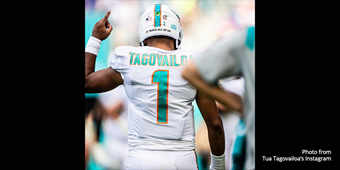Brain Aneurysms: Game Of Thrones Actress’ Toughest Battle

Find Your Perfect Match
Answer a few questions and we'll provide you with a list of primary care providers that best fit your needs.
She’s known by millions of fans as the strong and powerful Mother of Dragons on the popular HBO series Game of Thrones. Yet during the first half of filming, Emilia Clarke was “deeply unsure of herself” as she battled to recover from two brain aneurysms.
This week — in the lead-up to the show’s April 14 final season premier — Clarke appeared on CBS Sunday Morning, talking about her difficult recovery and how working on Game of Thrones pulled her through bouts of depression.
To understand what happens during a brain aneurysm and how it’s treated, Premier Health Now talked with neurologist Esteban Cheng-Ching, MD, Clinical Neuroscience Institute.
As Clarke can attest, “a severe headache could be a primary symptom of a brain aneurysm that is rupturing, or about to,” says Dr. Cheng-Ching.
A brain aneurysm occurs when a weak spot in the wall of an artery allows blood to collect. If the artery bursts and bleeds into the brain it causes a subarachnoid hemorrhage, a life-threatening type of stroke that can damage the brain.
On Feb. 11, 2011, after filming season one of Game of Thrones, Clarke felt a bad headache while working out. The pain became intense. She started vomiting. Clarke was rushed to the hospital. An MRI showed a subarachnoid hemorrhage. She underwent emergency minimally invasive endovascular coiling to seal off the aneurysm. She was 24.
Clarke’s MRI also revealed a second, smaller aneurysm that doctors decided to monitor.
“Warning signs of a ruptured aneurysm are a very important sign to seek immediate, emergency medical attention,” says Dr. Cheng-Ching.
These signs include:
- A sudden, severe headache, “the worst headache in your life”
- Dilated pupils
- Numbness, weakness or paralysis on one side of the body
- Stiff neck
- Nausea or vomiting
- Loss of consciousness
- Severe sensitivity to light
- Pain above or behind the eye
- Difficulty talking
Clarke began sharing her personal struggles with a raw and emotional essay in the March 21 issue of The New Yorker.
In 2013, after wrapping up season three, Clarke’s doctors decided to repair the second aneurysm before it got worse. But the minimally invasive endovascular repair failed. The aneurysm burst. Clarke needed immediate open brain surgery to save her life.
Recovering from aneurysm repair left Clarke in extreme pain. She spent a month in the hospital after both surgeries. She feared she would never be able to act again. She worried about brain damage and felt “like a shell of myself.”
While Clarke’s aneurysms are somewhat unusual for a person so young, more people under age 45 are experiencing strokes, says Dr. Cheng-Ching, due to high blood pressure, high cholesterol and stress.
Today, Clarke says she’s back to 100 percent, thanks to time, and excellent care and recovery. Like her character Khaleesi, the Breaker of Chains, Clarke now devotes some of her time to freeing others from the devastating effects of aneurysms. Her SameYou nonprofit works to increase access to neurorehabilitation for young people recovering from brain aneurysms and stroke.
Find Your Perfect Match
Answer a few questions and we'll provide you with a list of primary care providers that best fit your needs.
Source: Esteban Cheng-Ching, MD, Clinical Neuroscience Institute; CBS Sunday Morning; The New Yorker




